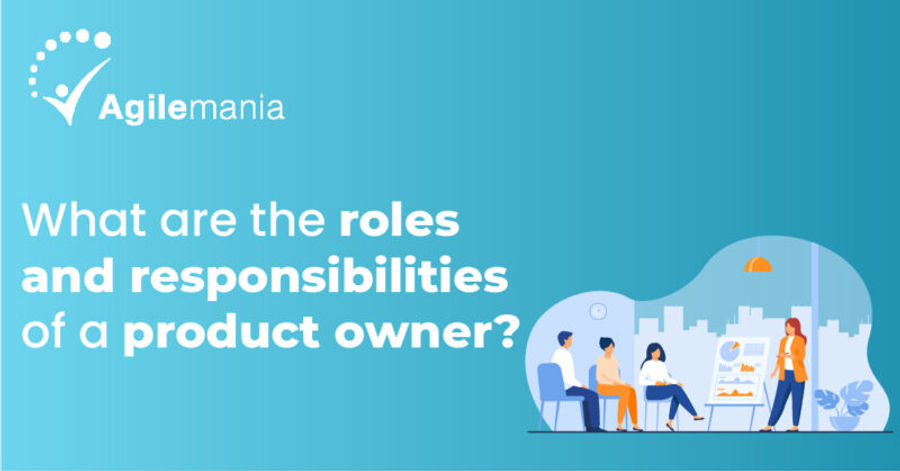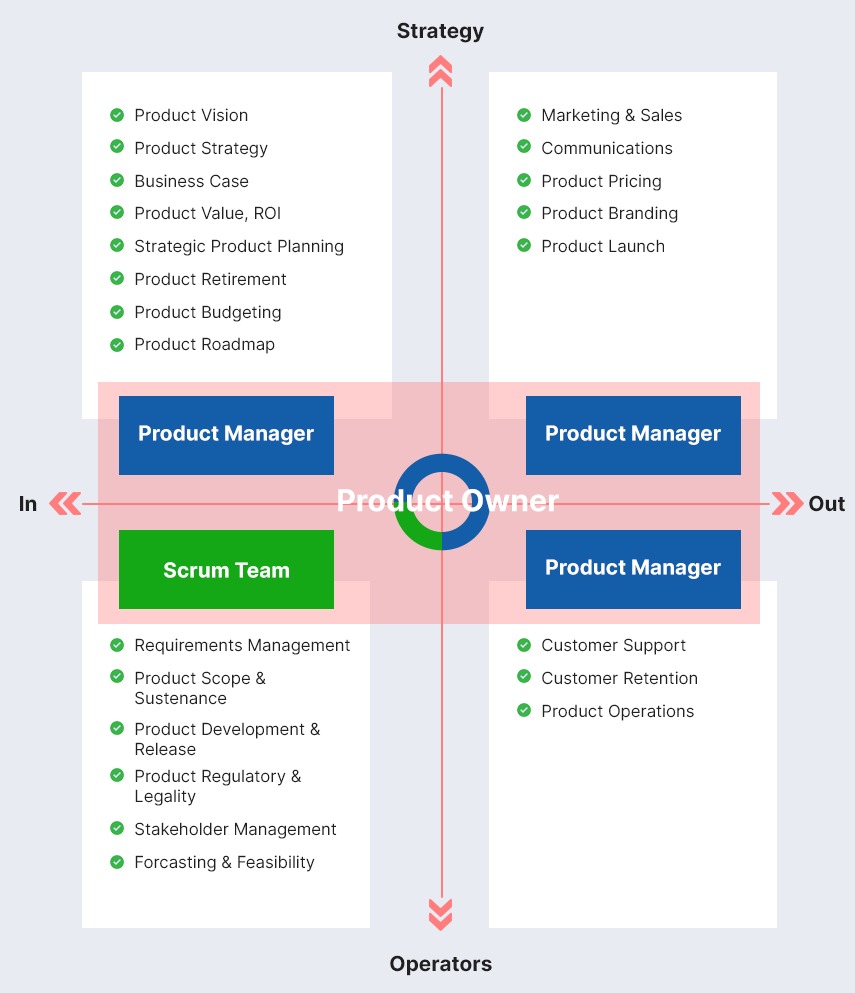
- Sumeet Madan
- Jun 2nd 2020
A Product Owner is a person who owns the Product and is accountable for its success. Product Owner responsibilities are often misunderstood in the market. Product Owner usually doesn’t have ownership with the Product that they are working on, and they aren’t empowered to make the decisions regarding the Product.They are mostly focused on writing the requirements of the product that are dictated by the stakeholder(s). These types of Product Owners are popularly known as the Business Analyst.
Scrum Product Owner is a Role in Scrum and carries the accountability for maximizing the value of the Product/Success of the Product/ROI of the Product by
- Clearly expressing Product Backlog items.
- Ordering the items in the Product Backlog to best achieve goals and missions
- Optimizing the value of the work the Development Team performs
- Ensuring that the Product Backlog is visible, transparent, and clear to all, and shows what the Scrum Team will work on next and
- Ensuring the Development Team understands items in the Product Backlog to the level needed.
What is a Product Owner?
The scrum guide describes scrum product owner as the person who is in-charge of maximizing the value of the product. The process is widely varied across organizations and individuals. A product owner is an individual, not a team who may represent the needs of many stakeholders.
If anyone in the team wants any change in the product backlog, they need to convince the product owner and respect their decisions. Before that, let’s understand what is a product backlog, and what it includes. A product backlog is a to-do list with the details of every task that needs to be done to build the product.
It is an ongoing and continuous process, and it includes:
- New features
- Enhancement to existing functionalities
- Technical debt
- Infrastructure update
Now that you know what a product owner, it's time to discuss product owner responsibilities – what we are here for.

Responsibilities of a Product Owner
2. Managing the Product Backlog: The product backlog is a list that contains and prioritizes the details of every little task you require to include in your product. Formulating the list of backlog items and prioritizing them as per the critical business objectives is the responsibility of the product owner. They have to jot down the list of project dependencies to determine the sequence of product development. The product backlog is dynamic and will keep evolving as the project requirements change. The product backlog should be made accessible to all the stakeholders and developers for superior performance.
3. Defining the Sprint objective: The Product Owner defines the sprint objective. The product owner defines the suggested sprint objective which will serve as base to determine the sprint goal by the Scrum Master, Scrum Team, Product Owner, and the Development Team.
4. Manage budget, scope, releases, and stakeholders of the Product: The product owner is responsible for managing the money. In addition, they manage the scope, releases, and stakeholders to ensure the project is delivered on time.
5. Review the work done by the development team: The product owner inspects the product increment made by the development team in each iteration. The review is carried out to ensure if the work is as per the product vision. If it is satisfactory, then the work will need to be revised by the development team in the future sprints. Pending or incomplete work will be prioritized and sequenced to deliver the expected outcomes from the user stories.
6. Being available to the development team: The Product Owner has to be available to address the development team’s questions and queries regarding the customer needs and point of view to effectively build the functionality.
7. Effective communication to the stakeholders of the Product: The Product Owner is the central communicator between the development team and the stakeholders. They need to be best communicators to ensure there is approval of the stakeholders for all major decisions and strategies. Clear communication is required to ensure there are instructions and deliverables for the development team.
8. Collaborating with the development team for the Product Backlog Refinement: Product Backlog Refinement is a repetitive meeting where product owners, product managers, and the engineering teams sit to prioritize, enhance, and finalize the items before the sprint planning. The Product Owner collaborates with the development team to confirm shared understanding between all the people involved. It is necessary to get an estimate of the size for the difficulty and implementation. Finally, the collaboration is done to determine if the items in the product backlog are done based on business value and the efforts needed.
9. Measuring the value of the Product (maybe using EBM): Evidence-Based Management is a framework businesses can leverage to help them measure, manage, and increase the value they derive from their product delivery. It focuses on bettering outcomes, minimizing risks, and maximizing value. The Product Owner should use EBM as it guides organizations to take the right measures to make the right investments in the correct places. Additionally, it aids in making smart decisions and decreases risk with the help of an iterative and incremental method.
10. Product roadmap: A Product Roadmap is the long term visual summary of the vision and direction of your product offering with the passage of time. The Product Owner owns the product roadmap. It gives an insight into the product’s current state to the internal teams and the stakeholders.
11. Product marketing and sales: The Product Owner works closely with the Product Manager, sales, marketing, and development teams to develop a product that has a right product market fit.
12. Product operations: Product Owner helps in product operations which is easy sharing of resources and data between functional departments in the organization. They work closely with the product operations manager for effective product operations. Product Owners may choose to delegate his/her responsibilities to operations, finance, marketing sales, or development teams but are still held accountable for their actions and overall successful product. Now that you know the scrum product owner role and responsibilities, you must be well-aware of the product owner skills you must possess to perform your role seamlessly and succeed in this field.
Scrum Product Owner Skills
- Leading product management and performing business analysis and managing the product requirements in multiple emerging markets.
- Building the requirements while communicating between business and developers.
- Building digital product management enterprise tools
- Initiating
- Planning
- Executing
- Monitoring and controlling
- Closing
Are You Ready To Ace Your Career as a Product Owner?
Product owner is a valuable asset to the organization for executing projects efficiently and on time. Product owner responsibilities include some key functions such as creating a roadmap for the project, managing the needs of the stakeholders, and bringing the products to market successfully. If you are still not confident about your skills, or feel stuck in your career – then we highly recommend you to check our upcoming scrum product owner trainings that can act as a ladder to boost your career.
Find Our Upcoming Trainings










